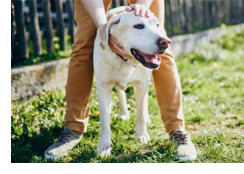
Have you noticed any new lumps on your pet?
We recommend any lumps get checked fairly promptly by our team. This is because some lumps require further treatment for your pet’s health and comfort, while some can be harmless.
What might my pet’s lump be? A new lump on your pet could be:
- Inflammation e.g. an insect sting
- Infection e.g. a tooth root abscess
- A foreign body e.g. a grass seed migrating between the toes
- A cyst – a fluid-filled lump
- A tumour – these may be benign (i.e. non-cancerous) or malignant (cancerous, spreading around the body)
How can we tell what my pet’s lump is?
Sometimes we will look at a lump and get a good idea of what it might be. For example, if it’s a mass type with a fairly classic, distinct appearance.
However, in most cases it’s best for us to do testing of the lump to confirm what is causing it.
This can involve:
In-house testing – this is where we collect some material from the lump, either with a needle or by smearing a glass slide onto it if the lump is moist. We then look at the sample under the microscope.
Surgical biopsies – in some cases, we can only get a definitive answer by removing part or all of the lump. This depends how extensive the lump is. Once done we can send it to the laboratory for testing.
What treatment will be required?
Once we know what mass type your pet has we will recommend appropriate treatment. Some lumps, such as cysts or benign tumours, may just require monitoring to ensure they don’t grow big enough to bother your pet.
Malignant cancers may require varying treatments depending on what specific type they are – treatment options may involve surgery, referral to a specialist for chemotherapy/radiation therapy or palliative care to keep your pet comfortable.
The best option for your pet (and your worry levels) is to get any lump checked promptly by our Pet Doctors team – we in-cyst!
This article is part of our July Newsletter. For more informative articles and Pet Doctors’ News you can sign up for our monthly edition here.
Plus, you can join the conversation on our Facebook page!

